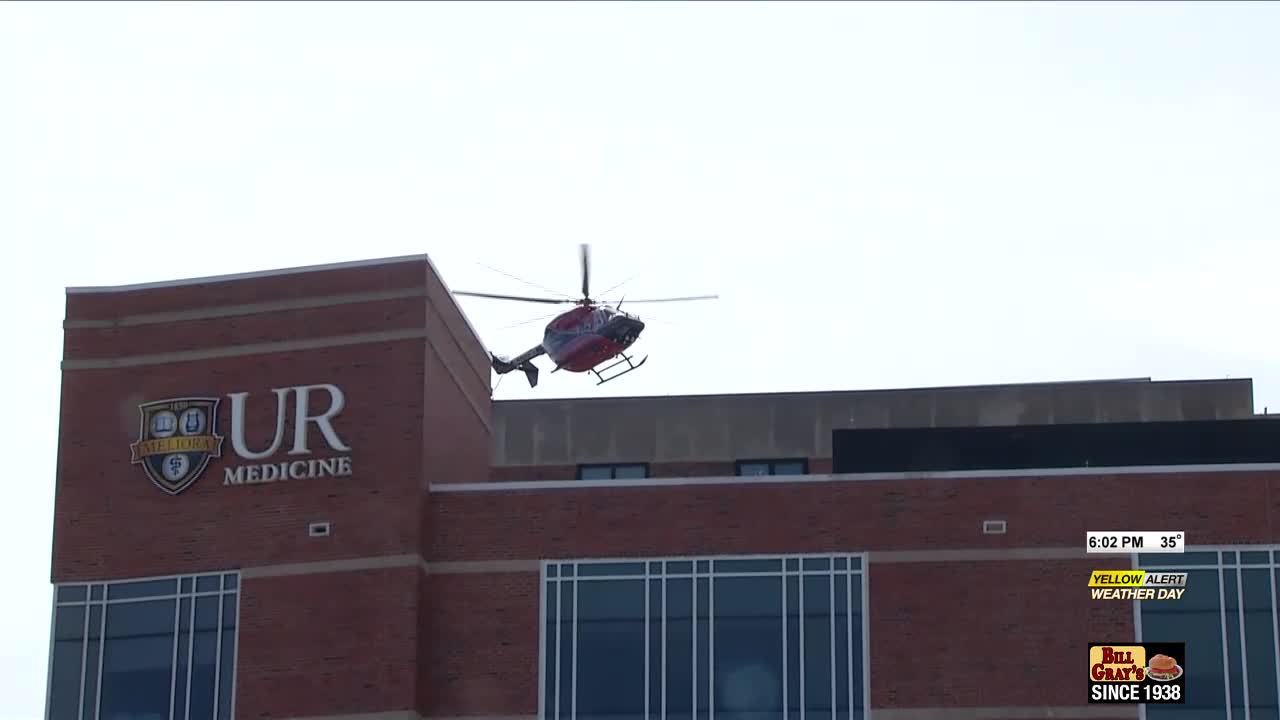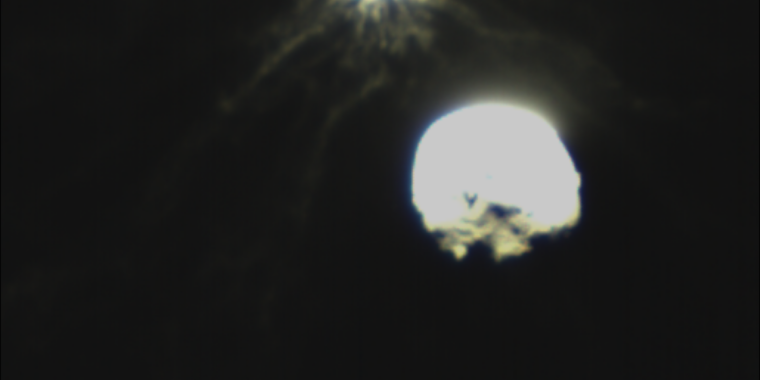

Ten obraz uderzenia pioruna został zarejestrowany w kompleksie startowym 39B w NASA Kennedy Space Center na Florydzie wieczorem 2 kwietnia 2022 r. W sobotnie popołudnie, 27 sierpnia, podczas startu miały miejsce trzy uderzenia pioruna w wieże systemu ochrony odgromowej. Pad 39B – trafienie w wieżę 1, trafienie w wieżę 2. Źródło: NASA
SLS) rocket’s core stage and prepared the four RS-25 engines.
Meteorologists with Space Launch Delta 45 predict a 70% chance of favorable weather for launch on Monday, August 29. The weather guidelines for NASA’s Artemis I flight test identify conditions to launch the agency’s Space Launch System and Orion spacecraft.
NASA held a prelaunch media briefing. Participants included:
- Mike Sarafin, Artemis mission manager, NASA Headquarters
- Charlie Blackwell-Thompson, Artemis launch director, Exploration Ground Systems Program, Kennedy
- Judd Freiling, ascent and entry flight director, Johnson
- Rick LaBrode, lead flight director, Johnson
- Melissa Jones, recovery director, Exploration Ground Systems Program, Kennedy
- Melody Lovin, weather officer, Space Launch Delta 45
- Jacob Bleacher, chief exploration scientist, Exploration Systems Development Mission Directorate, NASA Headquarters
Zespół zarządzający Artemis I zapewnia odprawę przed startem po spotkaniu zespołu zarządzającego misją przed startem Artemis I. Kosmiczny system startowy NASA i statek kosmiczny Orion wystartują z Launch Pad 39B w centrum na test w locie wokół Księżyca 29 sierpnia . Misja bezzałogowa zademonstruje zdolność rakiety SLS do bezpiecznego przenoszenia statku kosmicznego Orion wokół Księżyca iz powrotem oraz powrotu na Ziemię w ramach programu agencji Artemis.
NASA przeprowadziła również odprawę (zamieszczoną powyżej) na własnym księżycu[{” attribute=””>Mars exploration plans with the following participants:
- Bill Nelson, NASA administrator
- Bhavya Lal, NASA associate administrator for technology, policy, and strategy
- Jim Free, NASA associate administrator, Exploration Systems Development Mission Directorate
- Kathy Lueders, NASA associate administrator, Space Operations Mission Directorate
- Thomas Zurbuchen, NASA associate administrator, Science Mission Directorate
- Prasun Desai, NASA deputy associate administrator, Space Technology Mission Directorate
- Randy Bresnik, NASA astronaut
NASA’s Space Launch System rocket and Orion spacecraft are scheduled to lift off from Kennedy’s Launch Pad 39B during a two-hour launch window that opens at 8:33 a.m. EDT (5:33 a.m. PDT) on Monday, August 29.

A lightning strike was recorded at Launch Complex 39B at NASA’s Kennedy Space Center in Florida during the evening of April 2, 2022. NASA’s Space Launch System (SLS) and Orion spacecraft were undergoing a prelaunch test called a wet dress rehearsal at the pad for the Artemis I mission. The lightning strike was recorded by cameras stationed at the pad and mobile launcher using a special filter called a “clear day frame,” which provides an overlay of the raw frame on a reference image. Artemis I will be the first integrated test of the SLS and Orion spacecraft. Credit: NASA
As the Artemis I countdown progresses, rain and thunderstorms continued throughout yesterday afternoon at NASA’s Kennedy Space Center in Florida. Earlier yesterday afternoon, there were three lightning strikes to the lightning protection system towers at Launch Pad 39B – a strike to Tower 1, and two strikes to Tower 2. Fortunately, the initial indications are that the strikes were of low magnitude.
A weather team has begun an assessment that includes collecting voltage and current data, as well as imagery. The data will be shared with a team of experts on electromagnetic environment efforts who will determine if any constraints on vehicle or ground systems were violated. Engineers will conduct a walkdown at the pad overnight, and if needed, conduct additional assessments with subsystems experts.
Spójrz na różne uderzenia piorunów na przestrzeni lat w Launch Complex 39B w NASA Kennedy Space Center na Florydzie. Imprezę uchwyciły szybkie kamery umieszczone na wyrzutni i mobilnej wyrzutni, a także w budynku montażu pojazdów. W przypadku zdjęć, które pojawiają się w biały dzień, zastosowano specjalny filtr o nazwie „clear day frame”, który zapewnia nałożenie surowej klatki na obraz referencyjny. W Pad 39B znajdują się trzy maszty o wysokości 600 stóp z przewodami napowietrznymi używanymi do przesyłania energii elektrycznej na całym obwodzie panelu, aby zapewnić ochronę odgromową pojazdów nośnych podczas ich obsługi i wystrzeliwania z panelu. Kliknij tutaj, aby dowiedzieć się więcej o wieżach piorunowych.
System ochrony odgromowej wyrzutni obejmuje trzy 600-metrowe wieżyczki i przewody nośne umieszczone w celu ochrony pocisku, statku kosmicznego i mobilnej wyrzutni. Druty biegną do ziemi mniej więcej po przekątnej, kierując prąd piorunowy z dala od rakiety.
Z dnia na dzień inżynierowie będą również przygotowywać się w pępku, obsługiwać rdzeń i rozpocząć ładowanie akumulatorów rdzenia systemu Orion Launch System i Space Launch System.
Pierwsza z serii coraz bardziej skomplikowanych misji, Artemis I będzie bezzałogowym testem w locie, zapewniającym podstawę do rozszerzenia ludzkiej obecności na Księżyc i dalej. Misja pokaże osiągi rakiety SLS i przetestuje możliwości Oriona w ciągu około sześciu tygodni, podczas podróży około 40 000 mil za Księżycem i z powrotem na Ziemię.

„Introwertyk. Myśliciel. Rozwiązuje problemy. Specjalista od złego piwa. Skłonny do apatii. Ekspert od mediów społecznościowych. Wielokrotnie nagradzany fanatyk jedzenia.”





